Umberto Ciceri ha sviluppato negli anni una personale ricerca sulla visione: partendo dalla progettazione di tessuti e da studi di neurofisiologia dell’occhio umano e fisica del colore, approda ufficialmente nel mondo dell’arte contemporanea nel 2007.
La sua ricerca abbraccia sezioni di diversi contenuti e modalità di rappresentazione estetica: l’una ha finalità sociali e utilizza paesaggi sonori, videoproiezioni e performance; l’altra si basa su studi di neuroestetica, l’evoluzione di una tecnica che genera interazioni temporali con l’osservatore, spingendolo a muoversi davanti all’opera in un cerimoniale percettivo, denominata Hypertrait.
In cosa consiste precisamente l’Hypertrait?
“Cerco di esaltare la fragilità, la meraviglia, il dramma che si nasconde dietro ogni stato di ambiguità, ogni equilibrio provvisorio. Ritraggo, con l’aiuto di foto, suoni e equazioni, dei “personaggi ritmici”. L’Hypertrait è quella strana passeggiata traslata che conosce chi ha sperimentato il mio lavoro. Si tratta di opere che invitano a muoversi per poterle vedere, stabilendo così con l’osservatore una sorta di legame animato. L’arte è una costruzione ed è lo spettatore il soggetto della propria esperienza”.
Toccare con lo sguardo: le opere di Ciceri prevedono sempre un legame indissolubile con chi le osserva.
Ci dice come avviene questo processo di corrispondenza tra spettatore e opera?
“Nella visione cinetica dell’Hypertrait, le aree corticali sono molto stimolate, la sua azione sul sistema nervoso prescrive all’occhio una funzione “tattile”. In anni recenti si è scoperto che esiste una corteccia visiva primaria ed al suo interno un certo numero di aree corticali con funzioni specializzate; questa novità ha permesso di comprendere le basi biologiche dell’esperienza estetica ed emotiva: lo scienziato ha coinvolto l’artista visivo ed è nata la neurologia dell’estetica o “neuroestetica”. Il mio tentativo è proprio accentuare quegli stimoli che sono più efficaci per attivare il maggior numero di queste aree della corteccia dedicate alla visione, quella specifica del movimento, quella del colore, quella della forma, e così via. Ci sono fotorecettori che rispondono solo a orientamenti inclinati, altri che si eccitano solo con specifici contrasti, altri che si attivano solo attraverso cocktail di tonalità e rimangono spenti con altre, i miei colori si misurano in decimi di millimetro come le squame di una farfalla. Progetto dunque schemi di interferenza visibili ed altri più difficili da decodificare perché leggibili solo dal sistema nervoso. Mi sono chiesto: come fare ad attivare più aree neurali possibili e fare in modo che l’osservatore sia neurologicamente più attivo possibile per processare ciò che vede? Se riesco ad “accendere tutto” riesco a dare all’osservatore la possibilità di processare e decodificare più dati possibili e di conseguenza aumentare il suo personale gradiente di sensibilità ricettiva”.
Gli Hypertrait sono costruiti attorno al concetto di moto perpetuo e allo stato di grazia. Il movimento dell’osservatore fa muovere l’immagine e il movimento dell’immagine fa sì che l’osservatore si muova. Ne risulta un processo immersivo nelle profondità della percezione.
Ogni esperienza di Hypertrait è unica e dipende dalla relazione precisa tra opera e spettatore, incluso il numero di rivoluzioni e reiterazioni del ciclo. Questa relazione sarà sempre unica come la capacità di ciascuno di scomporre e ricostruire il materiale presentato nell’opera.
Che ruolo assume la dimensione spazio/temporale nei suoi lavori?
“Il nostro tempo è composto da una serie di istanti, cioè da segmenti temporali molto brevi, all’interno dei quali il mondo non presenta alcun cambiamento. Durante quell’intervallo che è l’istante il mondo è fermo. Per la specie umana l’istante ha una durata di un diciottesimo di secondo, i fotogrammi diventano così per me marche percettive legate fra loro sia in senso spaziale che temporale, in sequenza ed in sincrono secondo un ordine determinato dall’osservatore. Si innesca una relazione reciproca e niente sta più fermo. Inizio filmando un movimento, lo filmo intenzionalmente fuori fuoco. Il soggetto in sé non mi interessa, mi interessa il campo di forza che nasconde, la scia riverberante del suo agitarsi. Il processo sfocatura è da intendere quindi come forza antitetica al fuoco, visto come idea autoritaria. L’azione di dissoluzione del contorno non è distruttiva, non delimita semmai libera e produce forme e nuove sensazioni di indeterminazione. Non si sa con precisione dove si trova ciò che stiamo guardando, è proprio questo, potenziato dal cerimoniale, che prescrive all’occhio una funzione tattile. Io posso avere la netta sensazione di poter allungare una mano e toccare una nebbia di rosso scarlatto, o che il susseguirsi ritmico dei colori e delle forme produca un suono. La natura intera vibra, l’aria trema. Trasformo il movimento in “personaggio ritmico” e ne potenzio la recezione attraverso la regia, la successione del colore e la tessitura tra i fotogrammi estratti dal film. Tutto è ritmo. L’ingrandimento massimo del “personaggio ritmico” porta alle superficie indivisibili degli “square millimeter”, tasselli che elevano ad astrazione lo spazio ed il tempo interni all’opera. Un codice simbolico che riduce al minimo il caos della rappresentazione matrice. Il ritmo diventa vibrazione, campo di forza, fino a quando l’opera sembra suonare con noi una nota. Quando succede, il lavoro è riuscito, è aereo, respira”.
During the years, Umberto Ciceri has developed a personal research on vision: starting from the production of fabrics and from neurophysiological studies on the human eye and physics of color, he officially debuts in the world of contemporary art in 2007. His research embraces branches of different contents and modality of aesthetic representation: the first has a social purpose and employs auditory landscapes, video projections and performances; the latter is based on neuro-aesthetic studies, the evolution of a technique that creates temporal interactions with the observer, pushing him to move in front of the piece in a perceptive ceremonial, called Hypertrait.
What exactly is Hypertrait?
“I try to highlight the fragility, the astonishment, the drama hiding behind every state of ambiguity, every temporary balance. I portray, with the help of pictures, sound and equations, “rhythmic characters”. The Hypertrait is that strange shifted walk that is known to those who have experimented my work. These are works that encourage to move in order to observe them, establishing this way a sort of animated relationship with the observer. Art is a construct and the observer is the subject of his own experience”.
Touching with the gaze: the works by Ciceri always feature an unbreakable bond with the audience, and they end up attributing a “tactile” function to the eye.
Can you tell us how this process of correspondence between the audience and the piece takes place?
“In the kinetic vision of Hypertrait, the cortical areas are greatly stimulated, its action on the nervous system prescribes the eye a “tactile” function. In recent years it was discovered that a primary visual cortex exists and inside of it exist a certain number of cortical areas with specialized functions; this discovery allowed to comprehend the biological basis of the emotional and aesthetic experience: the scientist has joined the visual artist and thus the neurology of aesthetic or “neuro-aesthetics” was born. I attempt precisely at highlighting those stimuli that are the most effective at activating the largest number of these cortical areas dedicated to sight, the one specific for movement, color, shape, and so on. There are photoreceptors responding exclusively to inclined orientations, others that are stimulated only with specific contrasts, others that activate exclusively through cocktails of tonalities and are turned off with others, my colors are measured in tenths of millimeter like the flakes of a butterfly. So, I devise schemes of visible interferences and others more difficult to decode because readable only by the nervous system. I asked myself: how can I activate as many neural areas as possible and make so that the observer is as neurological active as possible to process what he is seeing? If I manage to “turn on everything”, I can give the audience the possibility to process and decode as many data as possible and by consequence increase his personal gradient of receptive sensibility”.
The Hypertraits are built around the concept of perpetual motion and state of grace. The movement of the audience moves the image and the movement of the image makes sure that the audience moves. The result is an immersive process in the depths of perception.
Every Hypertrait experience is unique and it depends on the precise relationship between the piece and the audience, including the number of revolutions and reiterations of the cycle. This relationship will always be unique, as the capacity of everyone to decompose and rebuild the material featured in the piece.
What role does the time/space dimension take in your works?
“Our time is made up of a series of moments, that is, brief temporal segments, within which our world does not exhibit any change. During that interval that is the moment the world is still. For the human species the moment lasts for one-eighteenth of a second, the frames thus become for me perceptive marks linked among them both in a spatial and temporal sense, in sequence and in sync following an order determined by the observer. A mutual relation sets in and nothing more remains still. I begin by filming a movement, intentionally captured out of focus. The subject itself does not interest me, I am only interested in the force field it hides, the reverberant trail of its agitation. The blurring process is to be meant therefore as an antithetic force to fire, seen as authoritarian idea. The action of outline dissolution is not destructive, it does not define, instead it frees and produces shapes and new sensations of indetermination. You don’t exactly know where what you are looking at is, and it is precisely this, enhanced by the ceremonial, that prescribes the eye a tactile function. I can have the clear sensation of being able to reach out and touch a scarlet-red mist, and the sensation that the rhythmic sequence of colors and shapes creates a sound. The entire nature resonates, the air trembles. I turn movement into a “rhythmic character” and I enhance its reception through direction, the succession of color and the weaving between the frames extracted from the movie. Everything is rhythm. The maximum enlargement of the “rhythmic character” leads to the unbreakable surfaces of the “square millimeter”, tiles that elevate to abstraction the inner space and time of the piece. A symbolic code that minimizes the chaos of the matrix representation. Rhythm becomes vibration, force field, until the piece seems to play a note with us. When this happens, the work is successful, it is aerial, it breathes”.


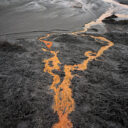
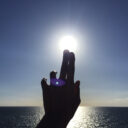

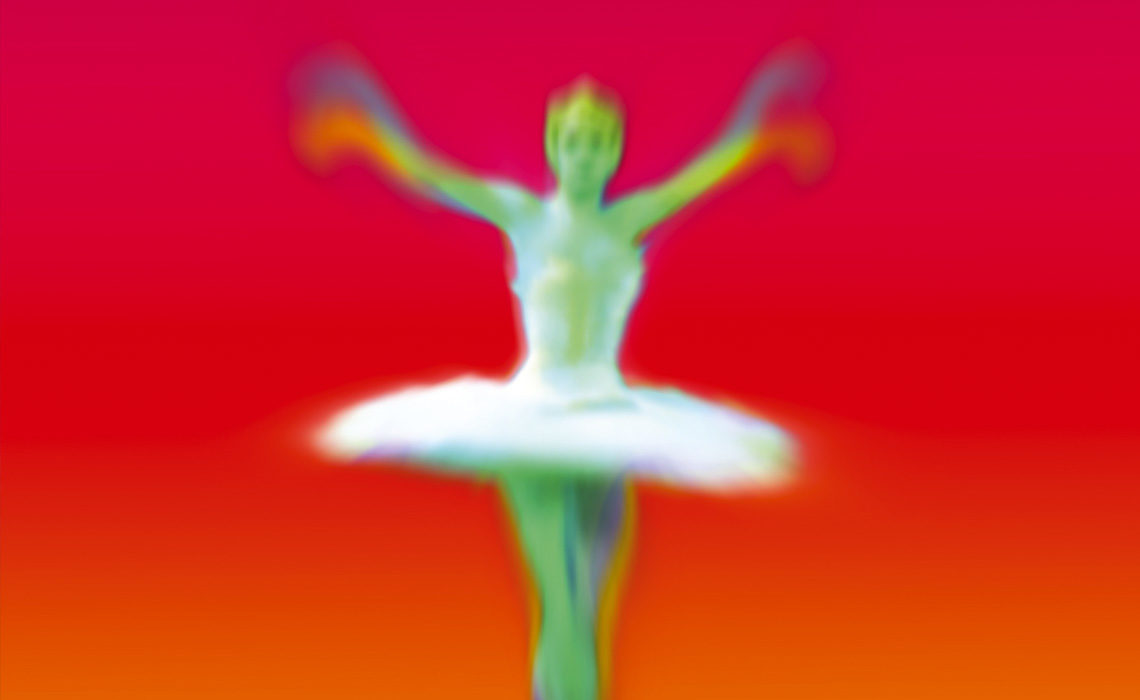
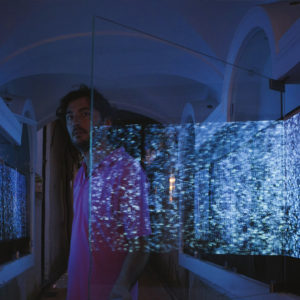
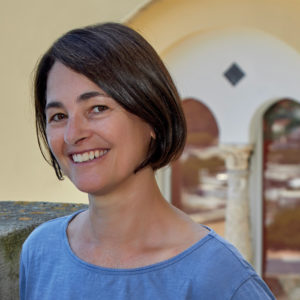
No Comments